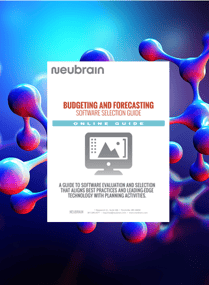The reality is long established practices that govern budgeting, planning, forecasting, reporting, and risk management are becoming increasingly complex. As a result, budget and finance professionals are pressured to improve accuracy, efficiency, and controls and provide greater visibility into costs, resources, and performance.
Despite outside pressures to improve the budgeting process, adopting more sophisticated budgeting models and approaches has been elusive for many public sector organizations. For this reason, we have developed a “cheat sheet” of the five most common challenges with traditional budgeting and our recommended budget methodologies and best practice solutions:
CHALLENGE
|
SOLUTION
|
- Traditional budgeting does not adequately link financial investments to results or outcomes, limiting the ability for in-depth analysis and understanding of the real ROI for any given line of business or initiative.
|
Performance-based framework allocates resources to specific objectives or activities based on appropriate metrics; ultimately, this framework provides increased visibility into how financial decisions translate into results. |
- Traditional budgets are created based on requests from competing stakeholders, each justifying their projected expenditures based on their departmental needs rather than the organization's overall goals.
|
Priority-based evaluation framework helps establish concrete targets and priorities based on this year’s strategic goals. The targets are then communicated to all stakeholders involved in the budget process, leading to faster decisions and minimizing budget negotiation issues that may arise from competing interests and priorities. |
- The traditional budgeting approach has consistently shown high rates of inaccurate assumptions, a massive time commitment, and tedious manual input.
|
Driver-based planning bases budgets and financial forecasts on operational drivers such as FTEs, customers, units of output, etc. It uses mathematical and linked relationships to create detailed budgeting, forecasting, and planning models with fewer inputs than traditional models. It reduces errors and saves time using preset calculations based on operational activities. |
- Static budgets and multi-year financial plans produce high-level financial targets and constraints, but If material deviations occur during the year, they can paralyze an organization that does not have an efficient process for evaluating the causes of these changes and adjusting the budgets and plans accordingly.
|
To be successful, budgets and plans should be updated as frequently as needed to reflect economic, organizational, and other outside variables rather than seen as 'set in stone.' |
- In an unstable and sometimes volatile marketplace, drastic changes in resource levels, budget constraints, and strategies are inevitable. If material deviations occur during the year, they can paralyze an organization that does not have an efficient process for evaluating the causes of these changes and adjusting the budgets and plans accordingly.
|
Performance under alternative or “what-if” scenario. A budget that considers performance under alternative (what-if) scenarios will serve your organization better than one that ignores the future and risks and invests too much time detailing the budget based on past events. |
Modern budgeting software solutions can vastly improve an organization's budgeting, forecasting, and performance management capabilities. Not only can software speed up the decision-making process by making your data more accessible, but it can also highlight trends and exceptions, foster a common understanding of the various drivers of performance and their relationship to future outcomes, and help develop new insights based on the extensive use of data, statistical and quantitative analysis and predictive modeling.
Implementing a new budgeting process and software solution can be daunting, with costly consequences. That is why it is critical to understand your needs, know your options and equip yourself with the right tools and resources before you make any changes to your budget methodology.
To help organizations better navigate the challenging budgeting and forecasting software selection process, we have developed a free resource, "Budgeting and Forecasting Software Selection Guide," summarizing years of tried and true budgeting software selection and implementation best practices.







